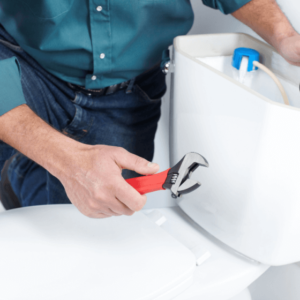The sandbox has been a staple of child’s play for decades. You can add this pile of fun and playground magic to your yard by building and installing a sandbox yourself. It just takes a weekend afternoon and a little know-how to get it done.
Step 1: Plan It Out
Successfully making a sandbox takes planning and forethought. You can’t just dump a pile of sand in your yard and call it a day. You need to take the size of your yard into consideration and where a feasible and safe location will be. The size of the sandbox is up to you. Just make sure it doesn’t take up too much of your yard for your liking and that it’s not too small for your kids to enjoy. Use a measuring tape or similar tool to measure out an applicable area and estimate what square footage might work. Anything from 4′ x 4′ to 6′ x 6′ is a good place to start. Mark the dimensions of the location with stakes and landscaping twine. If you’re going to have a 6′ x 6′ box, for example, measure 6′ with the measuring tape and push stakes in the ground at each end of the measured distance. Measure another 6′ perpendicular to each of the stake points and mark the new ends with stakes. Tie an end of landscaping twine to one of the stakes and then wrap it around each of the four stakes until you have a 6′ x 6′ square.
Safety Alerts
Where possible, try to plan your sandbox in an area that receives some shade either by the house, another structure or from trees to keep your children from being exposed to too much UV radiation.
Choose a location that provides easy visibility of your children at play.
Step 2: Excavate the Sandbox Area
Unless your yard is completely flat, you may need to do a little bit of excavation to create a level area in which your sandbox will sit. Placing the walls of the sandbox partially below ground level will also make it sturdier. Using a shovel, dig down 4″ inside the staked out location and remove all soil inside the area to that depth. Tamp it down using a tamper so that it’s level.
Add a 1″ layer of sand into the excavated area. Pour it in and spread it using a level-head rake (use the top of the rake head, not the tines) or by hand until it has been leveled out at 1″.
Helpful Tip
You can place a level in select spots inside the excavated area to ensure that it is level both before and after adding the 1″ of sand.
Next, cover the area with landscape fabric. Use shears or a utility knife to cut the fabric to the correct dimensions. The sand and fabric will help with drainage, as well as keep grass and weeds from growing up and through the sand.
Step 3: Create the Sandbox Frame
You’ll want to construct the sandbox with wood so it resists water, insects and the elements. Purchase 2″ x 12″ cedar boards or composite decking wood to create the frame for the sandbox. Double-check the measurements you made of the staked out location for the sandbox so that you cut the wood pieces to the correct length. Cut the pieces to the required length using a table saw or circular saw. Use a framing square to ensure that the junction between two pieces of wood is square. Fasten the boards together with three 3″ wood screws in each outside corner using a power drill.
Helpful Tip
Have someone help you hold the boards in place when you are putting in the wood screws.
Next, you can add seats at each corner of the box that will also act as braces for better structural integrity. Cut 90-degree triangular pieces from a 2″ x 12″ cedar board using a miter saw so that the pieces sit on the corners flush with each side. These will not only add a comfortable place to sit, they also brace the corners making the box sturdier. Attach the seats using 3″ wood screws into the tops of the sandbox walls.
Step 4: Place the Sandbox Frame
Remove the stakes and string and put the sandbox frame into place. Use a rubber mallet to lightly tap the top of the frame in 1 or 2-ft. intervals so that it settles into place. Ensure that the landscaping fabric edges are completely covered by the frame. Trim any excess off on the outside of the frame with a utility knife.
Step 5: Fill the Sandbox with Sand
Fill the sandbox with play sand. It is “cleaner” than regular sand because it has been sifted and washed and is not as dusty or dirty as construction sand for your children to play in. Note that you will need A LOT of sand to fill your sandbox. To estimate how much, you need to know that length x width x height = volume. For a 6′ x 6′ sandbox with an approximate height of about 1′, you will need 36 cu. ft. of play sand to completely fill the sandbox. You don’t want to fill it up completely though. Fill at least half way. One hundred pounds of sand covers approximately 1 cubic foot.
Step 6: Cover the Sandbox for Protection
Buy a 6′ x 6′ tarp to cover the sandbox for when it’s not in use. Not only does this keep the sand dry, it protects it from any unwanted contaminants and objects — your neighbor’s cat might find the sandbox irresistible. Apply Velcro strips to one side of the tarp and then to corresponding locations on the sandbox walls. When fastened down, the Velcro will hold the tarp in place and keep it from blowing away or being invaded by animals or anything else.
Congratulations! You’ve brought the playground to your backyard and you did it yourself.
Project Shopping List
Here’s what you’ll need to complete this project successfully.
- Measuring tape
- Stakes
- Twine
- Shovel
- Tamper
- Sand
- Level-head rake
- Level
- Landscape fabric
- Shears
- Utility knife
- 2″ x 12″ cedar boards or composite decking wood
- Table saw
- Circular saw
- Framing square
- 3″ wood screws
- Power drill
- Miter saw
- Rubber mallet
- Tarp












